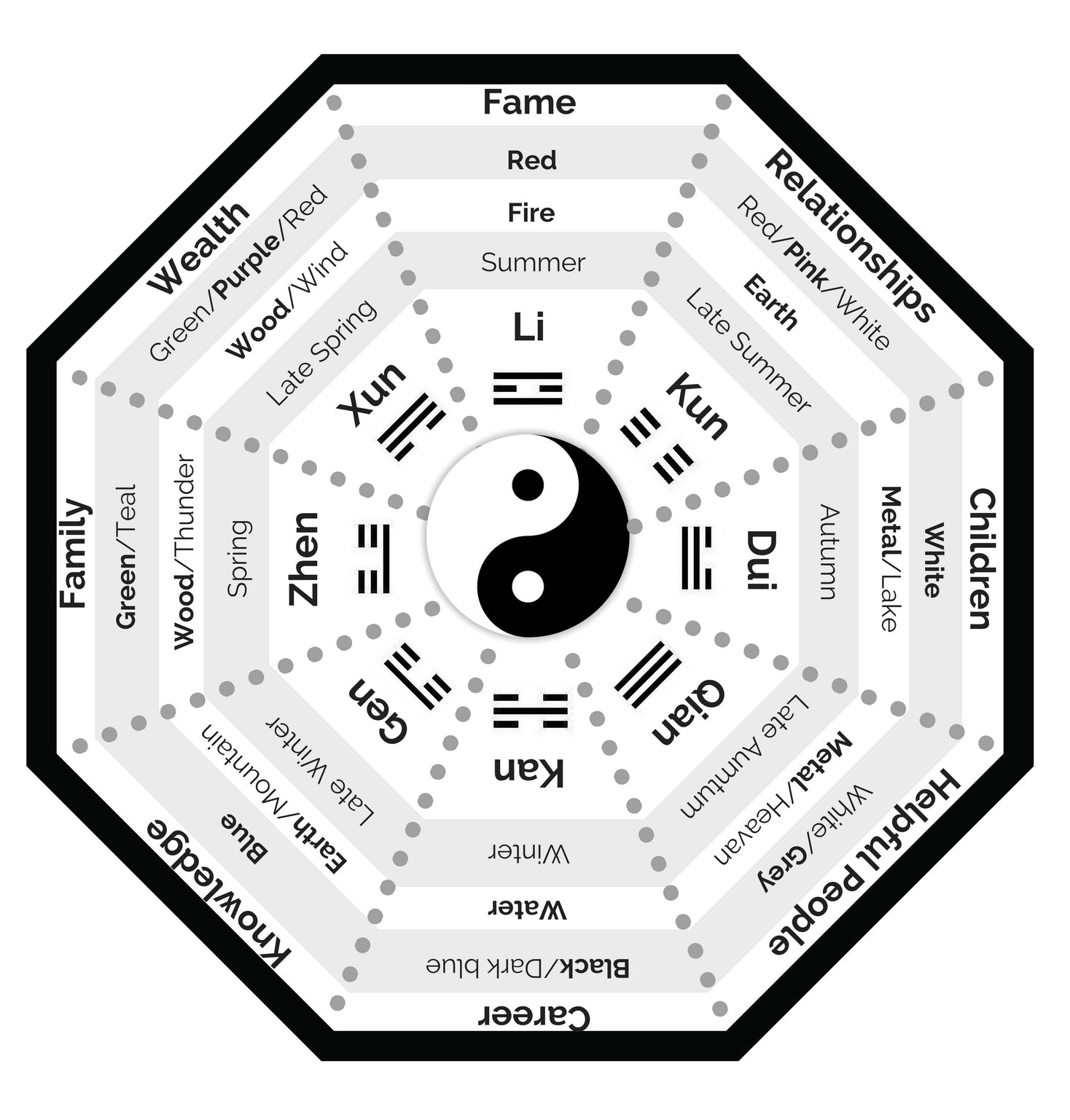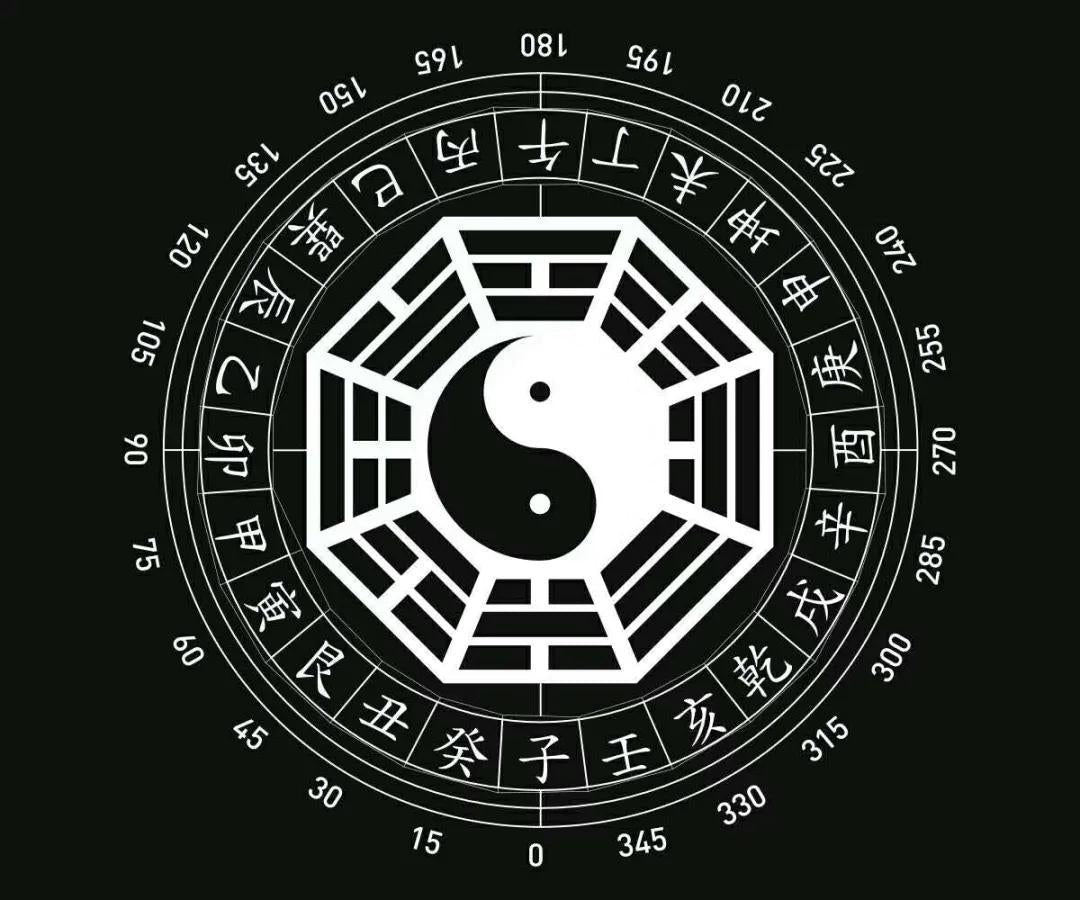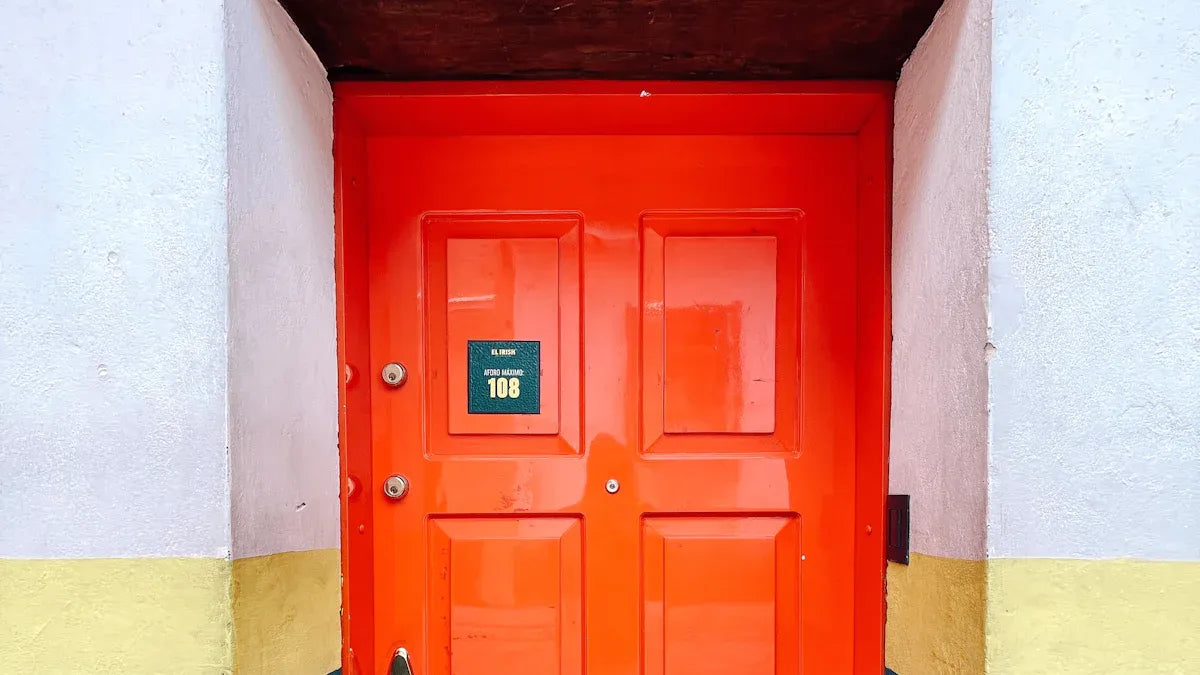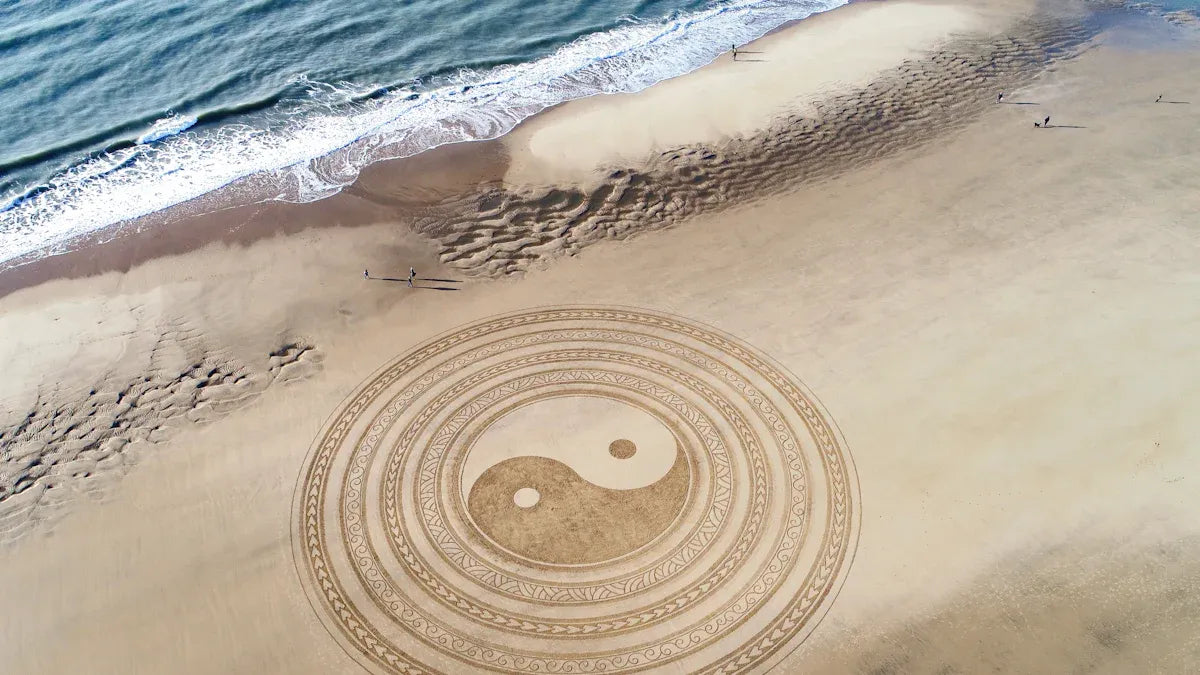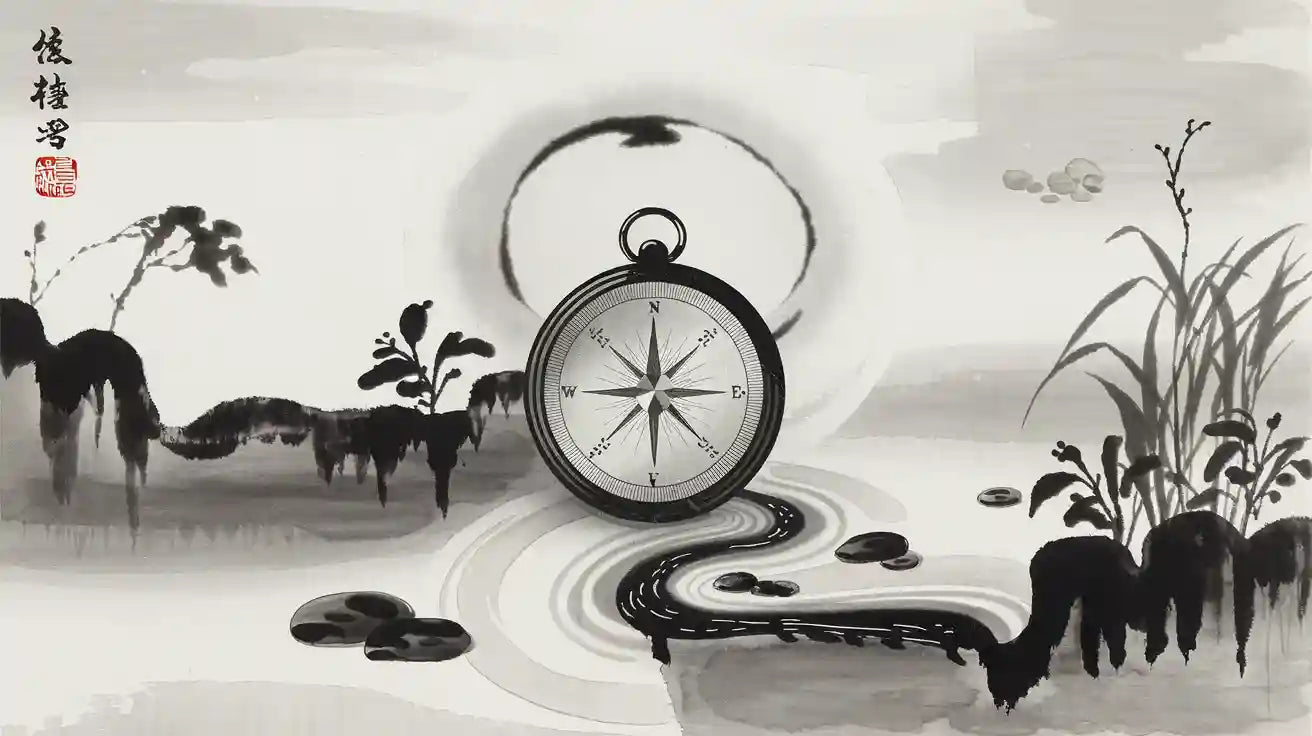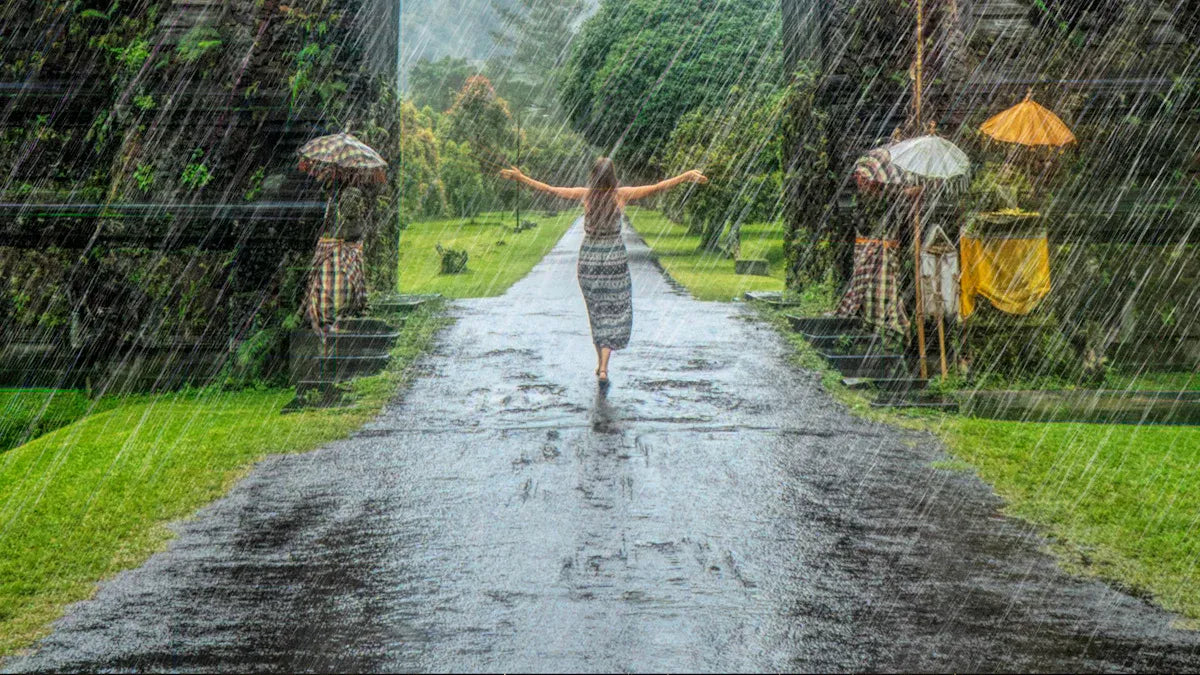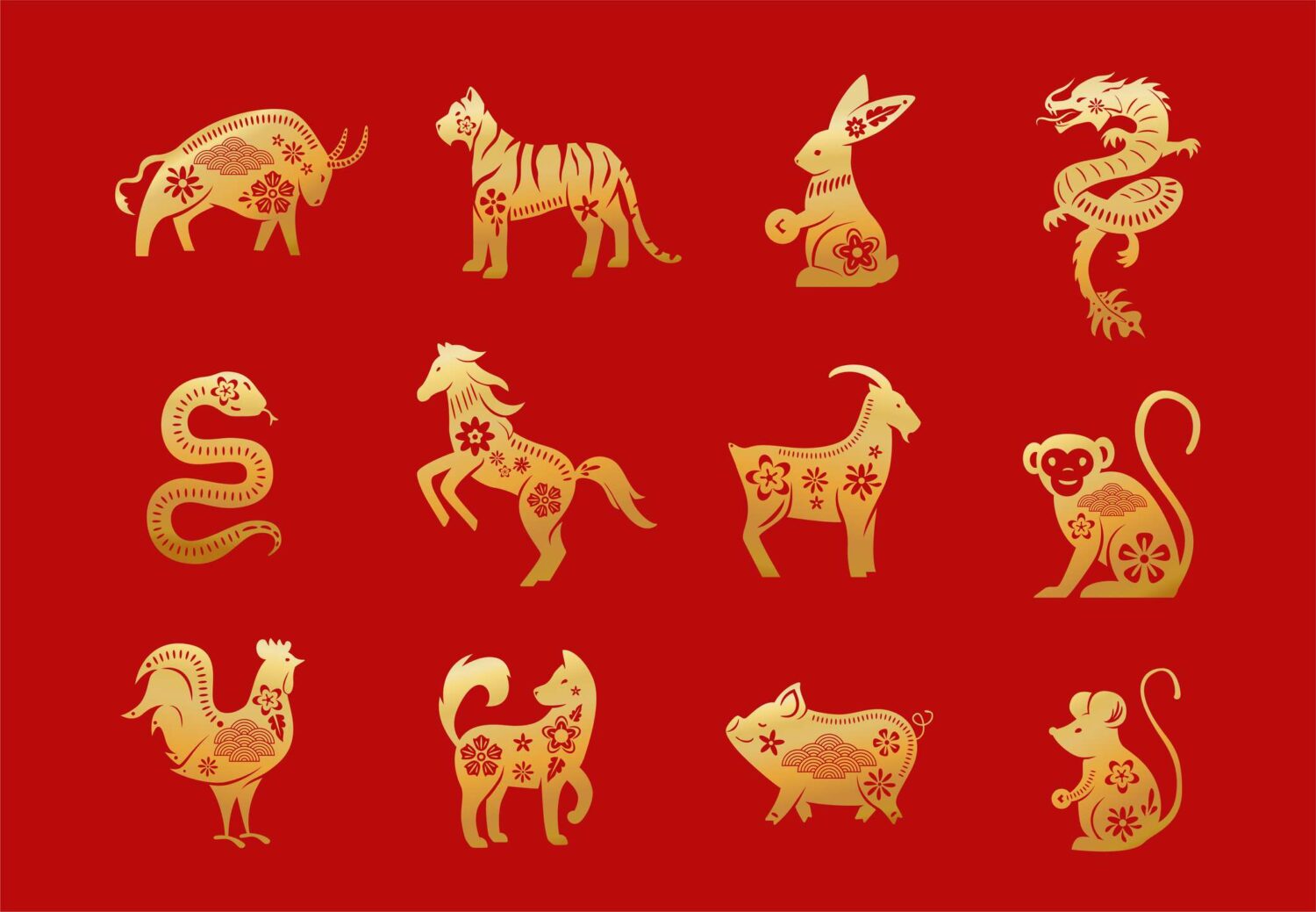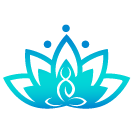You often see bagua as a powerful symbol in Taoism. This symbol shows how balance and natural forces shape your world. Bagua plays a key role in feng shui, where you use it to create harmony in your space. When you ask what is bagua, you learn that it connects you to nature and helps you find balance in daily life.
Key Takeaways
Bagua is a Taoist symbol made of eight trigrams that represent different life areas like family, health, and wealth.
Each trigram connects to natural elements and colors, helping you bring balance and harmony to your space.
You can use the bagua map in your home or office by aligning it with your front door to improve areas like career, relationships, and creativity.
Bagua teaches the balance of yin and yang, showing how opposite forces work together in life and nature.
Applying bagua principles can help reduce stress, boost focus, and create a more comfortable environment.
Bagua is used in martial arts and divination, offering tools for self-awareness, health, and decision-making.
Modern designers and architects use bagua ideas to create spaces that feel balanced and support well-being.
Avoid common mistakes by using the traditional bagua map correctly and matching colors and objects to the right areas.
What is bagua
Meaning
When you ask what is bagua, you explore a symbol that stands at the heart of Taoist thought. Bagua, also known as pakua, means "eight trigrams." Each trigram, or gua, uses three lines that can be either broken or unbroken. These lines show the balance between opposite forces. The eight guas together form a circle around a central yin and yang symbol. This design shows how all things in nature connect and change.
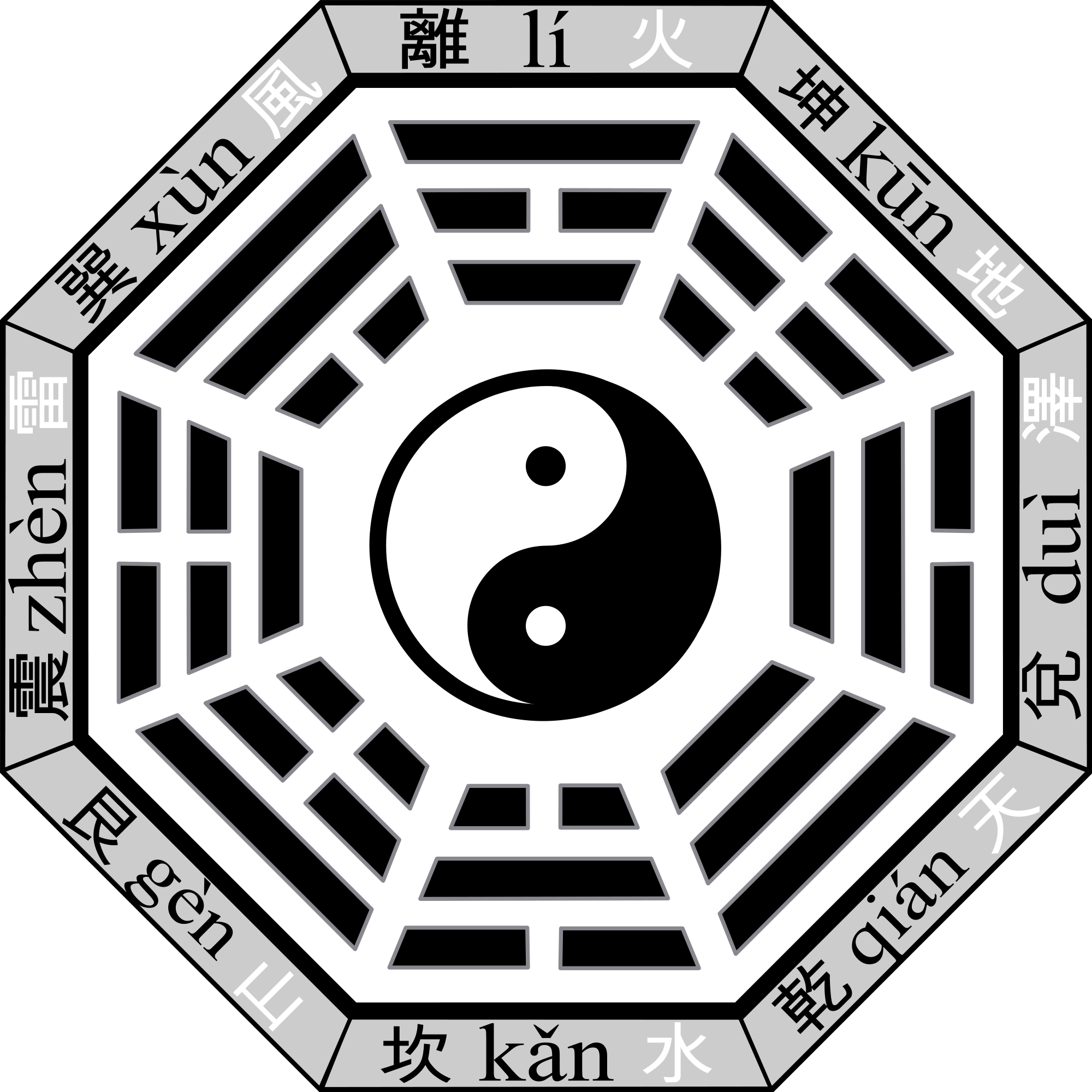
Bagua is more than just a symbol. It acts as a map for understanding the world. Ancient Chinese scholars used bagua to explain how nature, people, and the universe work together. The guas represent different parts of life, such as family, health, wealth, and knowledge. You can see this in the table below, which shows each gua, its meaning, and its element:
Bagua Aspect |
Chinese Name |
Associated Colors |
Element |
Symbolism / Meaning |
|---|---|---|---|---|
Family & New Beginning |
Zhen |
Green, Blue, Teal |
Yang Wood |
Represents family and new starts |
Wealth & Abundance |
Xun |
Blue, Green, Purple |
Yin Wood |
Symbolizes wealth and prosperity |
The Centre & Health |
Tai Qi |
Earth Tones, Yellow, Orange, Brown |
Earth |
Central health and balance |
Helpful People & Travel |
Qian |
Greys |
Yang Metal |
Support from others and travel |
Children & Completion |
Dui |
White |
Yin Metal |
Children and completion |
Knowledge & Self-Cultivation |
Gen |
Dark Blue, Black, Green |
Yang Earth |
Learning and personal growth |
Fame & Reputation |
Li |
Red |
Fire |
Fame and social standing |
Career & Path in Life |
Kan |
Black |
Water |
Career and life direction |
Love & Partnerships |
Kun |
Pink |
Earth |
Relationships and love |
You use bagua in feng shui to find harmony in your home or office. The guas help you see which areas of your life connect to each part of your space. This system has shaped Chinese philosophy, medicine, and even art for thousands of years.
Note: Scholars describe bagua as a Taoist symbol made of eight trigrams around the yin and yang motif. Its deep meaning is well known in China and is gaining attention worldwide, though many outside China may not fully understand its roots.
Origins
To understand what is bagua, you need to look at its origins in Taoist traditions. Bagua first appeared in ancient Chinese texts between 500 B.C.E. and 150 C.E. During this time, thinkers used bagua to link ideas from geology, astronomy, and medicine. The guas became a common language for explaining how the world works.
Many stories about bagua come from Taoist monks and martial artists. For example, Professor Kang Ge Wu studied the history of bagua by visiting old archives and talking to martial artists in WenAn. He found that Dong Hai Quan, a famous martial artist, learned bagua from a Taoist monk. Dong Hai Quan then taught others, and his students passed down the art for generations. Books like "Yin Yang Ba Pan Zhang Fa" from 1915 describe these teachings and show how bagua connects to Taoist beliefs.
Bagua's origins show that it is more than a tool for feng shui. It is a symbol that links people to nature, energy, and the flow of life. When you use bagua, you join a tradition that has shaped Chinese culture for centuries.
Yin and Yang
When you look at what is bagua, you see that yin and yang sit at its center. These two forces show how opposites work together. Yin stands for darkness, rest, and softness. Yang stands for light, action, and strength. The guas use lines to show these forces. A broken line means yin, and a solid line means yang.
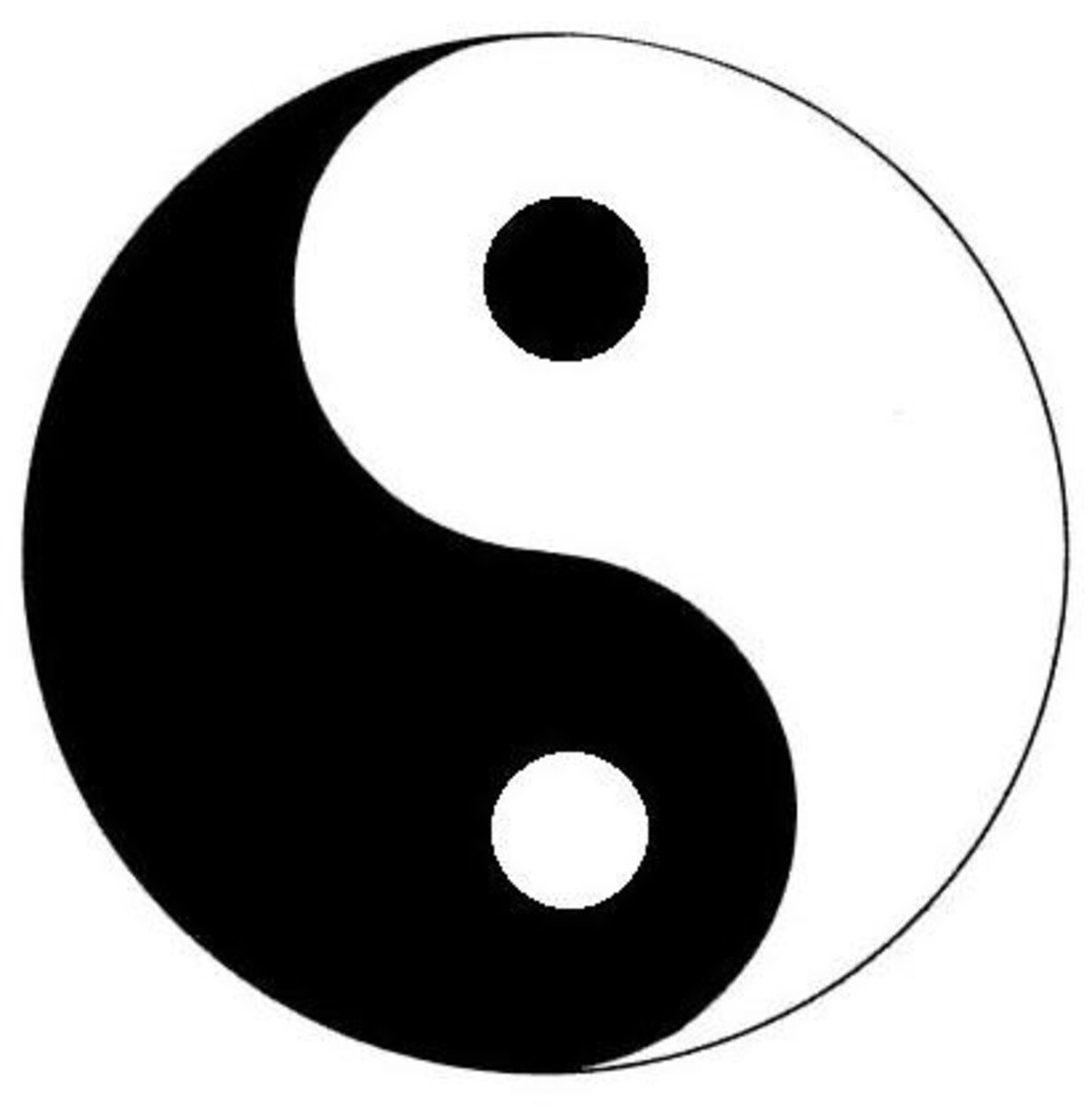
The Yijing, or Classic of Changes, uses the eight trigrams of bagua to explain how yin and yang shape the world.
Tibetan culture also uses bagua and yin and yang in art, religion, and medicine.
Tibetan divination methods use the eight trigrams and nine palaces, showing how these ideas spread beyond China.
The taiji diagram, which shows yin and yang, appears in Tibetan temples and art.
Tibetan Buddhism uses ritual objects that stand for yin and yang, showing how these ideas fit into spiritual life.
The Tibetan calendar links yin and yang with the five elements and zodiac signs.
Studies show that many cultures have adopted and adapted bagua and yin and yang, making them key parts of divination, ritual, and art.
Bagua and yin and yang together help you see the balance in all things. When you use bagua, you learn to find harmony in your life by understanding how these forces work.
If you keep asking what is bagua, you will find that it is a guide to balance, change, and connection in your world.
Structure
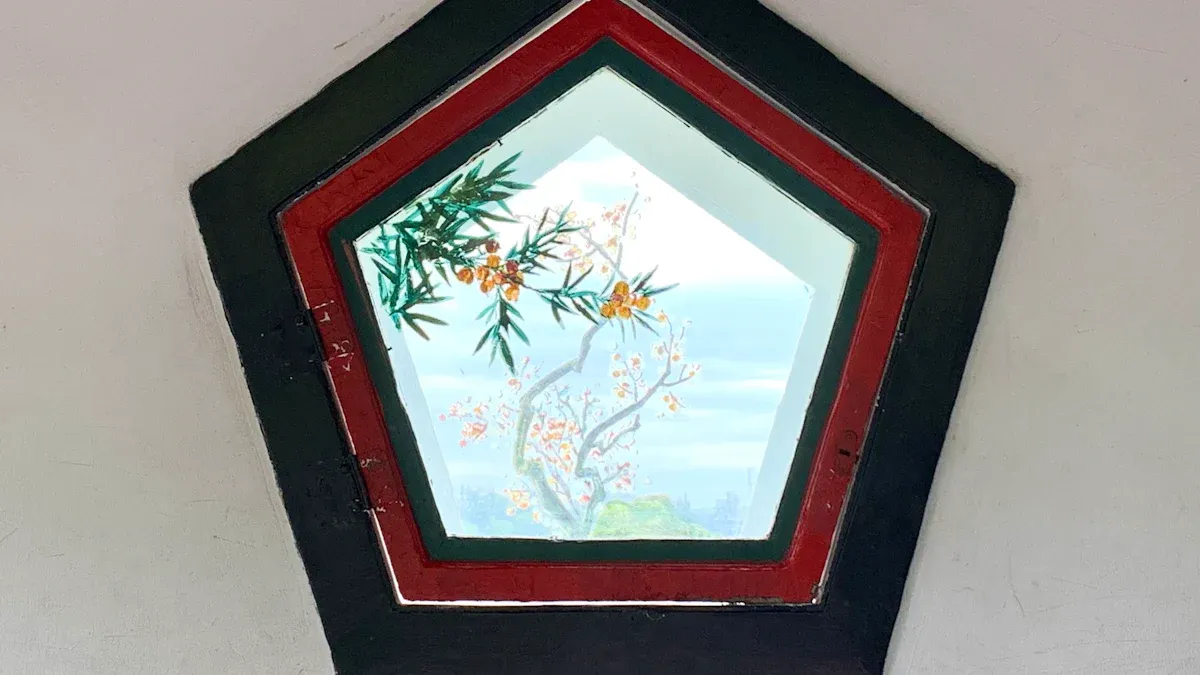
Eight Trigrams
The eight trigrams, or guas, form the core of the bagua. Each trigram uses three lines, which can be solid or broken. These lines create a unique symbol for each gua. You can see these symbols in many places, from ancient texts to modern feng shui maps.
Symbols
Each gua has its own symbol. These symbols are not just random shapes. They represent deep ideas about life and nature. Scholars have found that the trigrams also match with eight main emotions. These emotions come in four pairs of opposites, such as joy and sadness or fear and trust. This pairing shows how the guas help you understand balance in your feelings and actions.
The eight trigrams are three-line components used in I Ching divination.
Each trigram matches a primary emotion, based on Plutchik's model.
The trigrams exist as four pairs of opposites, reflecting how you react to big life problems like identity and territory.
The trigrams work as a compass for divination and have shaped both Confucian and Taoist thought.
Researchers have also shown that the trigrams use pictographic methods. This means the shapes of the lines connect to real objects or ideas. For example, the trigram Gen links to mountains and stillness. The symbols carry rich images that help you use the bagua for guidance.
Elements
Each gua connects to a natural element. These elements include wood, fire, earth, metal, and water. You can see these elements in the table below:
Gua Name |
Symbol |
Element |
Meaning |
|---|---|---|---|
Zhen |
☳ |
Wood |
New beginnings |
Xun |
☴ |
Wood |
Wealth |
Li |
☲ |
Fire |
Fame |
Kun |
☷ |
Earth |
Love |
Dui |
☱ |
Metal |
Joy |
Qian |
☰ |
Metal |
Leadership |
Kan |
☵ |
Water |
Career |
Gen |
☶ |
Earth |
Knowledge |
You use these elements to understand how the guas relate to your life. For example, if you want more growth, you focus on the wood guas. If you seek stability, you look at the earth guas.
Natural Phenomena
The bagua does not just show ideas. It also links to real forces in nature. Ancient Chinese scholars connected the guas to the stars and seasons. The bagua diagrams match old astronomical charts, like the Lo River Chart and the Turtle Calendar of Yao. Each direction in the bagua lines up with a special star and a mythical animal:
East: Azure Dragon (Spring equinox)
South: Vermilion Bird (Summer solstice)
West: White Tiger (Autumn equinox)
North: Black Tortoise (Winter solstice)
These links show that the guas help you understand the world around you. Feng shui uses these connections to align your space with natural energies. Some studies even show that earth energies, like underground water, can affect your health. When you use the bagua, you tap into these natural forces to bring balance and harmony to your life.
Bagua in Feng Shui
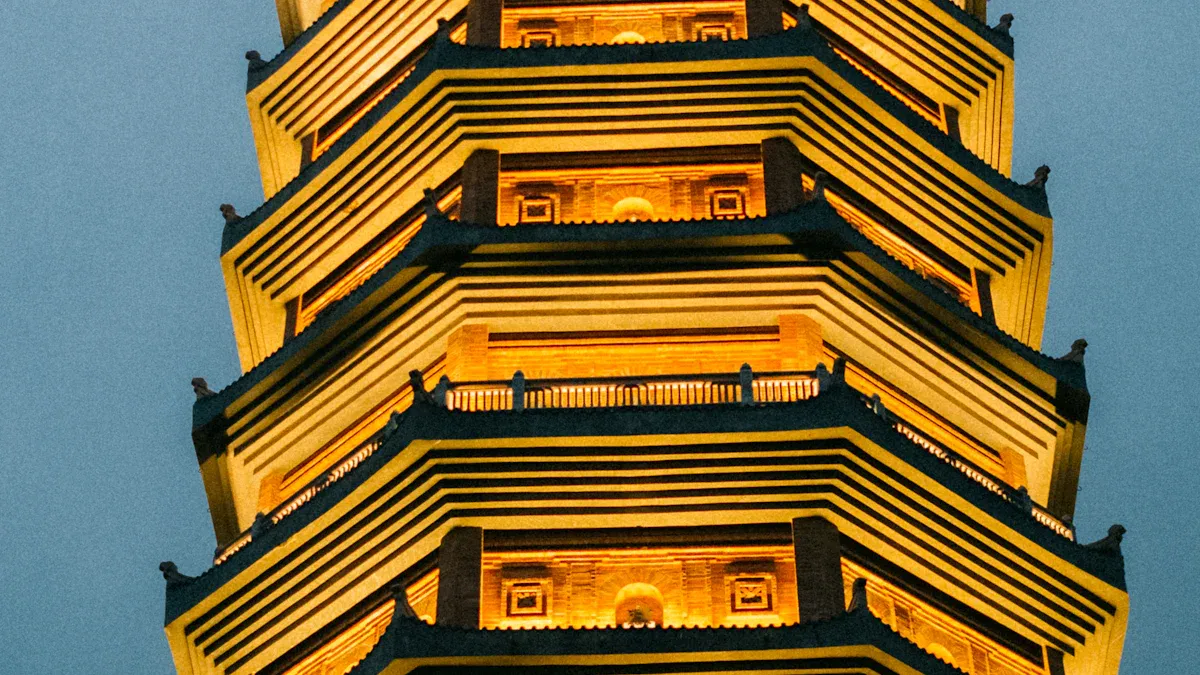
Bagua Map
The bagua map is a tool you use in feng shui to understand how your space connects to different parts of your life. This map divides your home or office into nine sections. Each section stands for a life area, such as wealth, health, or relationships. When you place the bagua map over your floor plan, you can see which part of your space matches each life area.
Layout
You start by drawing the outline of your space. Place the bagua map so that the bottom edge lines up with your main entrance. The map has a grid of three rows and three columns, making nine equal squares. Each square represents a specific life area. This layout helps you see where to focus your feng shui efforts.
Tip: Always align the bottom row of the bagua map with your front door. This makes it easier to match each area to your rooms.
Life Areas
Each of the nine areas of the bagua connects to a part of your life. You can use the table below to see what each area means and how it links to seasons, colors, and elements:
Area of Life |
Gua Name |
Season |
Color |
Elemental Energy |
|---|---|---|---|---|
Family |
Zhen |
Spring |
Green |
Wood - action |
Wealth |
Xun |
Late Spring |
Purple |
Wood - flexibility |
Centre (Tai Chi) |
N/A |
N/A |
Yellow |
Earth - connection |
Helpful People |
Qian |
Late Autumn |
Grey |
Metal - righteous |
Children |
Dui |
Autumn |
White |
Metal - perfection |
Knowledge |
Gen |
Late Winter |
Blue |
Earth - stillness |
Fame |
Li |
Summer |
Red |
Fire - brilliance |
Career |
Kan |
Winter |
Black |
Water - fluidity |
Partnership |
Kun |
Late Summer |
Pink |
Earth - receptive |
Feng shui practitioners use this system to guide changes in your home. For example, if you want to improve your career, you focus on the area linked to water and the color black. Many people find that arranging their space with the bagua map brings a sense of order and purpose.
Note: While feng shui uses terms like "energy" and "chi," scientific studies have not proven these effects. Many people still report feeling better after making changes, which may come from the power of suggestion or the comfort of a tidy space.
Alignment
Alignment is a key idea in feng shui. You use the bagua map to line up your space with natural forces and directions. This practice has deep roots in history. Ancient Chinese builders placed tombs and homes facing south to catch sunlight and protect from cold winds. They also used hills and rivers to shield and support their buildings.
Early Chinese cultures, like Yangshao and Longshan, built homes and tombs with careful orientation.
During the Zhou Dynasty, people used the bagua map and the five elements to choose the best sites for buildings.
In the Qing Dynasty, emperors planned tombs using mountains and rivers for protection, following bagua principles.
Traditional courtyard homes in China often face south and use walls or trees for balance.
Modern cities, such as Suzhou and Beijing, sometimes use feng shui ideas in their design.
Some government buildings have even been remodeled to follow feng shui alignment after facing problems.
You can use alignment in your own space by checking how your rooms and furniture fit with the bagua map. Try to keep pathways clear and let in natural light. Even if you do not believe in mystical energy, these steps can make your home feel more comfortable and balanced.
Application
Home
You can use the bagua map to bring harmony and balance to your living space. Start by drawing your floor plan and placing the map so the bottom edge lines up with your front door. Each area of your home matches a part of your life, such as health, wealth, or relationships. For example, you can use yellow and earth tones in the center of your home to support health and well-being. Keep this area open and free of clutter to let energy flow easily.
In the west part of your living space, add white or pastel colors and some metal objects. This area supports creativity and children. Place art supplies or family photos here to inspire joy. For the northeast, use blue or green and set up a cozy reading nook. This helps you focus on learning and wisdom. If you want to boost your career, use black or blue in the north area and add a mirror or items related to your job.
Tip: Many famous buildings use these ideas. The HSBC Building in Hong Kong has an open atrium and bronze lions at the entrance to welcome positive energy. The Apple Store in London sits on a street bend, which helps energy flow in a clockwise direction. These design choices show how you can shape your own home for better energy and comfort.
Office
You can also use the bagua map in your office to improve focus and success. Start by placing the map over your office layout, with the entrance at the bottom. Use the center area for open space and earth tones to support harmony. In the north, place items that remind you of your goals, such as a vision board or a small water feature. Make sure to keep your desk clear and organized.
In the northwest, add metal objects or travel photos to attract helpful people and new opportunities. Use white or grey colors in this area. For the west, display creative tools or awards to boost inspiration. These small changes can help you feel more balanced and productive at work.
Tips
When you use the bagua map, you may face some common mistakes. The table below shows these pitfalls and how to avoid them:
Common Pitfall |
Evidence-Based Tip |
Explanation |
|---|---|---|
Using the wrong map |
Use the traditional map |
Ensures correct energy mapping |
Misplacing water features |
Place water features in the right area |
Avoids negative energy |
Wrong enhancements |
Match items to the right area |
Supports positive energy |
Delaying cures |
Act quickly |
Prevents bad effects from lasting |
Using map outdoors |
Only use map inside |
Outdoor energy works differently |
Forcing styles |
Keep your own style |
Comfort matters most |
Relying only on the map |
Take personal action too |
Both work together |
Incorrect compass readings |
Check compass away from metal |
Ensures accuracy |
Expecting too much |
Know the limits |
Some problems need other solutions |
Using small cures |
Use larger items if needed |
Size can matter |
Causing conflict |
Find solutions for everyone |
Harmony is the goal |
Note: Always use the traditional map and match colors or objects to the right area. Do not force cultural symbols if they do not fit your style. Remember, changes in your living space work best when you also take action in your daily life.
Other Uses
Martial Arts
You can find bagua at the heart of a unique internal martial art called Baguazhang. This martial system began in the 19th century with Dong Haichuan, who learned from Taoist and Buddhist masters. He combined ancient circle walking with new martial techniques. When you practice Baguazhang, you use circular footwork, spiraling movement, and open palm strikes. These techniques help you move smoothly and change direction quickly.
Baguazhang stands out because it uses the eight trigrams from bagua as a guide for both combat and health. Each trigram matches a set of martial techniques and strategies. For example, you might use a tactic called "Golden Cicada Sheds Skin" to escape an opponent, inspired by the idea of change in the trigrams. You also learn to use your opponent’s energy against them with throws, joint locks, and rapid stepping.
Here are some key features of Baguazhang:
Circular footwork lets you avoid attacks and control the space.
Spiraling movement helps you generate power and stay balanced.
Palm techniques focus on open-hand strikes, blocks, and redirection.
Martial training includes weapons, such as swords and staffs.
Health benefits include better coordination, flexibility, and Qi flow.
Note: Baguazhang is not just about fighting. You also practice meditation, breathing, and Daoist health exercises. These activities use the trigrams to guide your energy and improve your well-being.
Many martial artists believe that understanding bagua philosophy gives you a deeper connection to the art. You learn to adapt like water, stay balanced, and use change to your advantage. The eight trigrams also appear in military strategy, where generals use them to plan attacks and defenses.
Divination
Bagua also plays a major role in divination. You use the eight trigrams as symbols to understand changes in your life. The most famous tool for this is the Yi Jing, or I Ching, which uses trigrams and hexagrams to answer questions and predict outcomes.
When you use the Yi Jing, you cast coins or sticks to create a pattern of lines. These lines form trigrams, which combine into hexagrams. Each hexagram has a special meaning. You read the result to find advice or insight about your situation.
Bagua-based divination helps you:
Analyze relationships and social events.
Make decisions during times of change.
Reflect on your actions and their effects.
You can also find bagua in Tibetan and Daoist rituals, where the trigrams guide spiritual practices. Some people use bagua charts for personal meditation or to set intentions for the future.
Practice |
How Bagua Is Used |
Purpose |
|---|---|---|
Yi Jing Divination |
Trigrams form hexagrams |
Guidance and prediction |
Rituals |
Trigrams in symbols and chants |
Spiritual protection |
Meditation |
Trigram-based breathing patterns |
Inner balance and clarity |
Tip: If you want to try bagua divination, start with simple questions. Focus on one area of your life, such as school or friendships. Use the answers as a way to reflect, not as strict rules.
Bagua’s use in martial arts and divination shows its power as a tool for understanding both the world and yourself. Whether you train in martial techniques or seek guidance through divination, you connect with a tradition that values balance, change, and awareness.
Significance
Balance
You can see balance as the heart of bagua’s symbolism. Each trigram stands for a natural element or life aspect, such as creativity, growth, or wisdom. When you look at the trigrams together, you notice how they show the need for harmony between different forces. This idea comes from Taoist philosophy, where balance means more than just peace. It means finding the right mix between change and stability in your life.
Each trigram links to a direction and an element, shaping how energy moves in your space.
The trigrams help you map out areas like career, health, and relationships, so you can bring harmony to your daily life.
The concept of yin and yang sits at the center, showing how opposites work together to create a whole.
You can use bagua to guide your actions and choices. For example, you might add plants to a room for growth or use calming colors for peace. Martial arts and Taoist practices also use these ideas. They teach you to move with balance and adapt to change. The Early Heaven and Later Heaven sequences show how bagua can explain both the order of the universe and the flow of daily life. This deep symbolism helps you understand your place in the world.
Modern Relevance
Bagua continues to shape modern life in many ways. Architects and designers use its principles to create spaces that feel good and work well. You might see bagua maps in homes, offices, or even large buildings. Many famous projects, such as the Bank of China Tower and One Central Park in Sydney, use these ideas to improve energy flow and comfort.
Designers use the bagua map to plan layouts, choose colors, and add natural materials.
Hotels and offices report better guest satisfaction and happier employees when they follow these principles.
Feng Shui helps people make better decisions, boost creativity, and create a sense of well-being.
A recent study of Bagua Village in China shows how these ideas help preserve culture and support sustainable growth. The village uses bagua principles to protect its history, include everyone in the community, and care for the environment. This approach matches global goals for a better future.
You can use bagua in your own life by setting clear intentions and making small changes in your space. Try adding plants, using natural light, or arranging furniture to support your goals. As more people focus on wellness and eco-friendly design, bagua remains a helpful guide for creating balance and harmony in the modern world.
Bagua gives you a way to see balance in your life and space. You learn how its eight trigrams shape Feng Shui, martial arts, and even creative problem solving. Studies show that bagua helps people solve problems by guiding them through clear steps. You can use bagua to bring harmony to your home or to spark new ideas. Explore books, online courses, or local workshops to learn more and see how bagua can help you every day.
FAQ
What does bagua mean in simple terms?
Bagua means "eight trigrams." You see it as a symbol with eight parts. Each part stands for a different area of life, like health or family. Bagua helps you find balance and harmony.
How do you use a bagua map at home?
You place the bagua map over your floor plan. Line up the bottom edge with your front door. Each section of the map matches a part of your life. You can add colors or objects to support each area.
Can you use bagua if you do not believe in feng shui?
Yes, you can use bagua for organizing your space or setting goals. Many people find it helpful for creating order and focus, even if they do not follow feng shui beliefs.
What is the difference between bagua and yin-yang?
Bagua shows eight life areas or forces. Yin-yang shows two opposite energies, like light and dark. Bagua uses yin and yang lines to create each trigram. Both help you understand balance.
Is bagua only for Chinese culture?
Bagua comes from Chinese traditions, but people around the world use it today. You see it in feng shui, martial arts, and even art. Anyone can learn from its ideas about balance.
How do you choose colors for each bagua area?
You match colors to each area based on the bagua map. For example, use green for family, red for fame, and black for career. The right color supports the energy of that life area.
Can bagua help with stress?
Yes, bagua can help you create a calm space. When you organize your room using bagua, you may feel more relaxed and focused. Many people say it helps lower stress.
Tip: Try adding plants or natural light to your space. These changes often make you feel better and more balanced.

